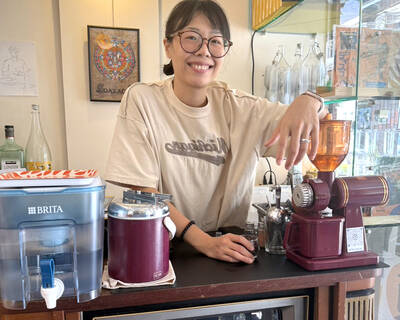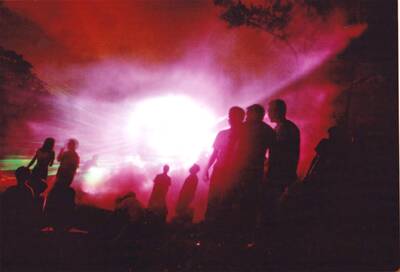When Howard Schultz in 1985 founded the company that would become the wildly successful Starbucks chain, no financial adviser had to tell him that coffee was America’s leading beverage and caffeine its most widely used drug. The millions of customers who flock to Starbucks to order a double espresso, latte or coffee grande attest daily to his assessment of American passions.
Although the company might have overestimated consumer willingness to spend up to US$4 for a cup of coffee — it recently announced that it would close hundreds of underperforming stores — scores of imitators that now sell coffee, tea and other products laced with caffeine reflect a society determined to run hard on as little sleep as possible.
But as with any product used to excess, consumers often wonder about the health consequences. And researchers readily oblige. Hardly a month goes by without a report that hails coffee, tea or caffeine as healthful or damns them as potential killers.
Can all these often contradictory reports be right? Yes. Coffee and tea, after all, are complex mixtures of chemicals, several of which may independently affect health.
CAFFEINE MYTHS
Through the years, the public has been buffeted by much misguided information about caffeine and its most common source, coffee. In March the Center for Science in the Public Interest published a comprehensive appraisal of scientific reports in its Nutrition Action Healthletter. Its findings and those of other research reports follow.
Hydration. It was long thought that caffeinated beverages were diuretics, but studies reviewed last year found that people who consumed drinks with up to 550 milligrams of caffeine produced no more urine than when drinking fluids free of caffeine. Above 575 milligrams, the drug was a diuretic.
So even a Starbucks grande, with 330 milligrams of caffeine, will not send you to a bathroom any sooner than if you drank 0.5 liters of pure water. Drinks containing usual doses of caffeine are hydrating and, like water, contribute to the body’s daily water needs.
Heart disease. Heart patients, especially those with high blood pressure, are often told to avoid caffeine, a known stimulant. But an analysis of 10 studies of more than 400,000 people found no increase in heart disease among daily coffee drinkers, whether their coffee came with caffeine or not.
“Contrary to common belief,” concluded cardiologists at the University of California, San Francisco, there is “little evidence that coffee and/or caffeine in typical dosages increases the risk” of heart attack, sudden death or abnormal heart rhythms.
In fact, among 27,000 women followed for 15 years in the Iowa Women’s Health Study, those who drank one to three cups a day reduced their risk of cardiovascular disease by 24 percent, although this benefit diminished as the quantity of coffee rose.
Hypertension. Caffeine induces a small, temporary rise in blood pressure. But in a study of 155,000 nurses, women who drank coffee with or without caffeine for a decade were no more likely to develop hypertension than noncoffee drinkers. However, a higher risk of hypertension was found from drinking colas. A Johns Hopkins study that followed more than 1,000 men for 33 years found that coffee drinking played little overall role in the development of hypertension.
Cancer. Panic swept this coffee-dependent nation in 1981 when a Harvard study tied the drink to a higher risk of pancreatic cancer. Coffee consumption temporarily plummeted, and the researchers later concluded that perhaps smoking, not coffee, was the culprit.
In an international review of 66 studies last year, scientists found coffee drinking had little if any effect on the risk of developing pancreatic or kidney cancer. In fact, another review suggested that compared with people who do not drink coffee, those who do have half the risk of developing liver cancer.
And a study of 59,000 women in Sweden found no connection between coffee, tea or caffeine consumption and breast cancer.
Bone loss. Though some observational studies have linked caffeinated beverages to bone loss and fractures, human physiological studies have found only a slight reduction in calcium absorption and no effect on calcium excretion, suggesting the observations may reflect a diminished intake of milk-based beverages among coffee and tea drinkers.
Robert Heaney of Creighton University says that caffeine’s negative effect on calcium can be offset by as little as one or two tablespoons of milk. He advised that coffee and tea drinkers who consume the currently recommended amount of calcium need not worry about caffeine’s effect on their bones.
Weight loss. Here’s a bummer. Although caffeine speeds up metabolism, with 100 milligrams burning an extra 75 to 100 calories a day, no long-term benefit to weight control has been demonstrated. In fact, in a study of more than 58,000 health professionals followed for 12 years, both men and women who increased their caffeine consumption gained more weight than those who didn’t.
HEALTH BENEFITS
Probably the most important effects of caffeine are its ability to enhance mood and mental and physical performance. At consumption levels up to 200 milligrams (the amount in about 0.5 liters of ordinary brewed coffee), consumers report an improved sense of well-being, happiness, energy, alertness and sociability, Roland Griffiths of the Johns Hopkins School of Medicine reported, although higher amounts sometimes cause anxiety and stomach upset.
Millions of sleep-deprived Americans depend on caffeine to help them make it through their day and drive safely. The drug improves alertness and reaction time. In the sleep-deprived, it improves memory and the ability to perform complex tasks.
For the active, caffeine enhances endurance in aerobic activities and performance in anaerobic ones, perhaps because it blunts the perception of pain and aids the ability to burn fat for fuel instead of its carbohydrates.
Recent disease-related findings can only add to coffee’s popularity. A review of 13 studies found that people who drank caffeinated coffee, but not decaf, had a 30 percent lower risk of Parkinson’s disease.
Another review found that compared with noncoffee drinkers, people who drank four to six cups of coffee a day, with or without caffeine, had a 28 percent lower risk of Type 2 diabetes. This benefit probably comes from coffee’s antioxidants and chlorogenic acid.

Cheng Ching-hsiang (鄭青祥) turned a small triangle of concrete jammed between two old shops into a cool little bar called 9dimension. In front of the shop, a steampunk-like structure was welded by himself to serve as a booth where he prepares cocktails. “Yancheng used to be just old people,” he says, “but now young people are coming and creating the New Yancheng.” Around the corner, Yu Hsiu-jao (饒毓琇), opened Tiny Cafe. True to its name, it is the size of a cupboard and serves cold-brewed coffee. “Small shops are so special and have personality,” she says, “people come to Yancheng to find such treasures.” She

Late last month Philippines Foreign Affairs Secretary Theresa Lazaro told the Philippine Senate that the nation has sufficient funds to evacuate the nearly 170,000 Filipino residents in Taiwan, 84 percent of whom are migrant workers, in the event of war. Agencies have been exploring evacuation scenarios since early this year, she said. She also observed that since the Philippines has only limited ships, the government is consulting security agencies for alternatives. Filipinos are a distant third in overall migrant worker population. Indonesia has over 248,000 workers, followed by roughly 240,000 Vietnamese. It should be noted that there are another 170,000

In July of 1995, a group of local DJs began posting an event flyer around Taipei. It was cheaply photocopied and nearly all in English, with a hand-drawn map on the back and, on the front, a big red hand print alongside one prominent line of text, “Finally… THE PARTY.” The map led to a remote floodplain in Taipei County (now New Taipei City) just across the Tamsui River from Taipei. The organizers got permission from no one. They just drove up in a blue Taiwanese pickup truck, set up a generator, two speakers, two turntables and a mixer. They

Hannah Liao (廖宸萱) recalls the harassment she experienced on dating apps, an experience that left her frightened and disgusted. “I’ve tried some voice-based dating apps,” the 30-year-old says. “Right away, some guys would say things like, ‘Wanna talk dirty?’ or ‘Wanna suck my d**k?’” she says. Liao’s story is not unique. Ministry of Health and Welfare statistics show a more than 50 percent rise in sexual assault cases related to online encounters over the past five years. In 2023 alone, women comprised 7,698 of the 9,413 reported victims. Faced with a dating landscape that can feel more predatory than promising, many in